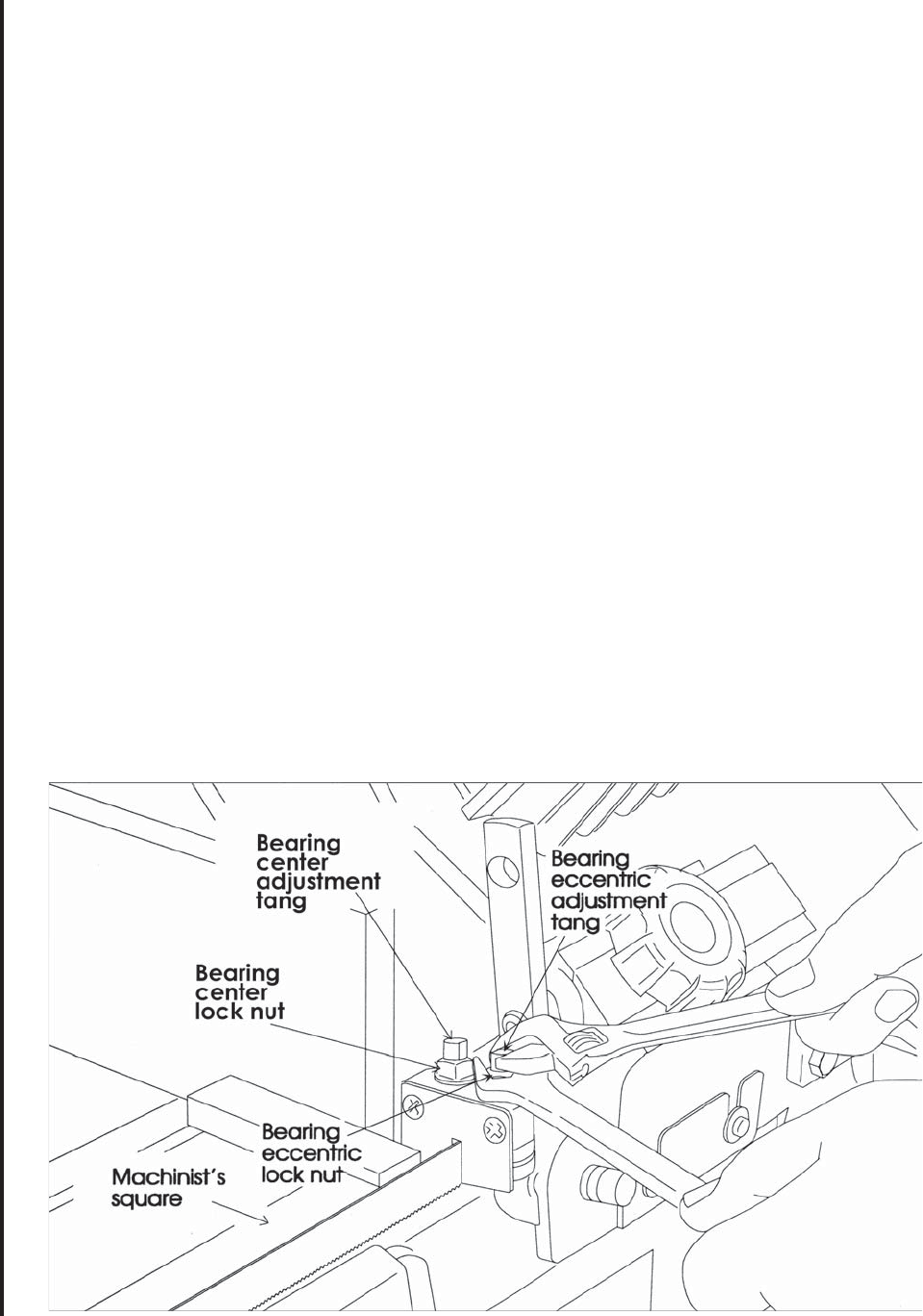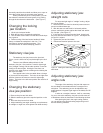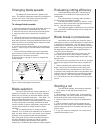
16
Replacing blade guide
and support components
All component parts are secured with nuts, bolts,
washers, or snap rings. To remove and replace any
component, first remove the blade according to instruc-
tions in Replacing blades. Then remove and replace the
faulty component(s).
The guide and support bearings are mounted on
eccentric shafts to permit adjustment of the bearing axis.
See Figure 11. By loosening the eccentric lock nuts and
using a wrench to turn the eccentric, all clearances and
positions can be adjusted.
Replacing a blade guide bearing is covered in the
section on Replacing guide bearings.
In the case of replacing a single faulty component
(such as a single bearing or pair of bearings on an
eccentric) you do not necessarily have to adjust all of the
other components -- however, their adjustment should be
checked when any other adjustment is made.
Before making any adjustments be certain to
disconnect the saw from its electrical power source to
prevent accidental motor start-ups.
Adjust blade for parallelism:
1. Use a new blade or a blade in nearly new condition and
have it fully tensioned and tracking correctly before
making any adjustments.
2. Be sure the stationary vise jaw is at a right angle to the
blade. If you are not certain the jaw is correctly adjusted,
use the procedure under Establishing a reference angle,
to be sure the jaw is correctly set.
3. Lower the saw arm to full horizontal position.
4. Use a machinist's protractor against the stationary vise
jaw and check the blade for parallel. If the blade is
parallel to the stationary jaw, no further parallelism
adjustment is required. However, if the blade is at an
angle to the jaw, determine which bearing set you are
going to move and the direction in which you need to
move it. Then proceed to the following steps.
4. Keep the bearing eccentric from moving by putting a
wrench on the adjustment tang of the eccentric. (See
Figure 12.)
5. Loosen the eccentric lock nut so you can rotate the
eccentric using the adjustment tang.
6. Turn the eccentric until you have shifted the bearing
assembly to where you want it to move.
7. Tighten the eccentric lock nut.
Figure 12: Adjusting blade parallelism using the support
bearing eccentrics. Use two wrenches -- one to lock and
unlock the lock nut, the other to adjust the bearings using
the tang on the guide bearing shaft.
8. Adjust the bearing on the other side of the blade so the
bearing clearance adjustment is correct. YOU MUST
PERFORM THIS STEP. The blade is being twisted by the
bearing assemblies and a lot of pressure is being exerted
by the blade against the bearings. See Adjusting guide
bearings.
9. Check the blade for squareness and vertical and re-
adjust as necessary until it is parallel to the clearance slot,
square to the vise jaw, vertical to the table, with side guide
bearings correctly adjusted.


















